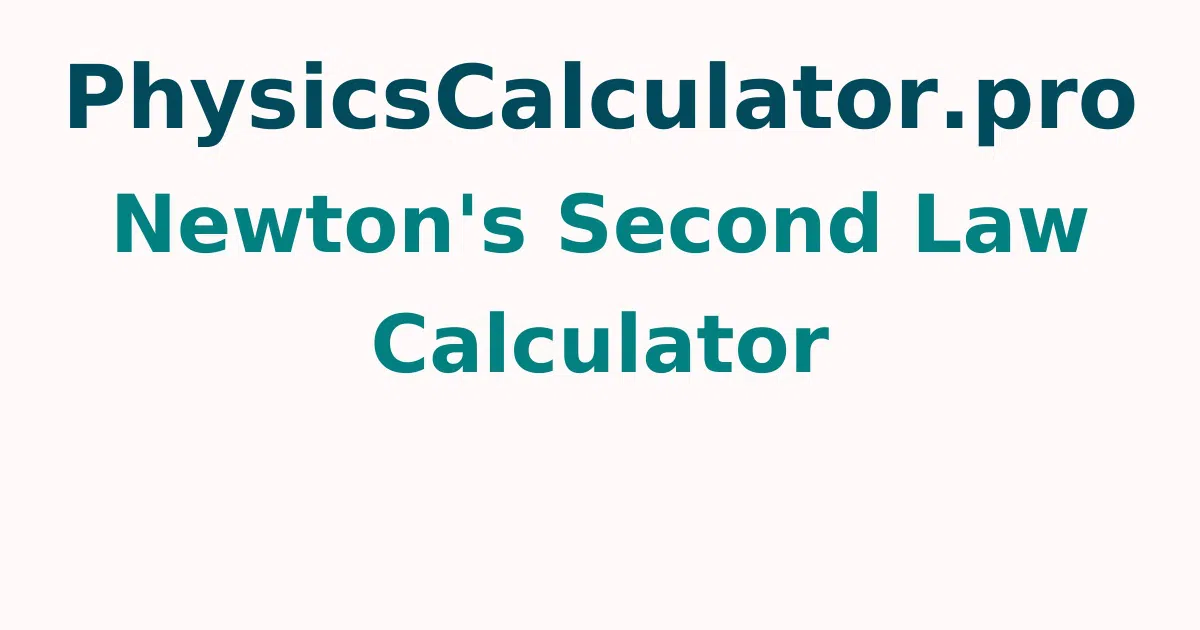Newton's Second Law Calculator
Use the Newton's Second Law of Motion Calculator to quickly determine the object's force and acceleration. Students must enter the object's mass, initial velocity, final velocity, and time difference, then press the calculate button to see the acceleration and force in seconds.
What is Newton's Second Law of Motion and how does it apply to an object?
Newton's Second Law states that an object's acceleration is proportional to its mass and the force applied to it i.e. F = m * a
a=(Vf - Vi)/t
- Here, The force occurring on a body is denoted by the letter F.
- a be the acceleration
- Vf is the object's ultimate velocity.
- The initial velocity of the object is Vi.
- Γêåt be the time difference.
How can you figure out how much force is acting on a body?
Force is defined as the rate of change of momentum, according to Newton's second law of motion. In the sections below, you'll learn how to find the force operating on a body in detail.
- Examine the object's starting velocity, ultimate velocity, time change, and mass from the question.
- Calculate the difference between the final and beginning velocity.
- Acceleration is calculated by dividing the velocity difference by the time difference.
- To calculate the force, multiply the object mass by the acceleration.
For more concepts check out physicscalculatorpro.com to get quick answers by using this free tool.
Newton's Second Law Examples
Question 1: A 3 kg object is amplified at a constant velocity of 3 m/sec2. Calculate the amount of net force needed to move the object?
Solution:
Consider the problem, we have
Mass of the object be m = 3 kg
Acceleration be a=3m/sec┬▓
As per Newton's second law of motion,
F=m* a
F=(3 kg)*(3 m/sec┬▓)
F=9N
As a result, the force exerted on a body is 9N.
FAQs on Newton's Second Law Calculator
1. What is the definition of Newton's Second Law?
According to Newton's second law of motion, the acceleration of an object is determined by two variables: the mass of the object and the force exerted on it. The force is exactly proportional to the acceleration, but the mass of the object is inversely proportional.
2. What are the examples do you have of Newton's Second Law?
- The ball's acceleration in a golf game is proportional to the force with which it is struck by the golf stick.
- The acceleration of an object falling from a specific height increases due to the gravitational pull.
- Pushing a truck with the same amount of force is more difficult than pushing a car, and the truck's mass is heavier than the vehicle's mass.
3. In Newton's second law, how do you find acceleration?
The formula for Newton's second law of motion is F=m*a then we can get, Acceleration, a =F/m. So, divide the force exerted on a body by the mass of the item to determine the acceleration.
4. What about Newton's Second Law Applications?
Two persons moving, pushing a cart, kicking a ball, and so on are examples of Newton's second law in action.
